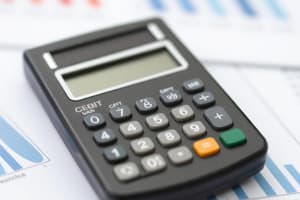Podcast
Questions and Answers
Accounts with a natural ______ balance increase with a debit transaction and decrease with a credit.
Accounts with a natural ______ balance increase with a debit transaction and decrease with a credit.
debit
______ assets are intended to be used for more than one year.
______ assets are intended to be used for more than one year.
Long-term
A ______ is a legally binding agreement stating that a business is owed money and when payment is expected.
A ______ is a legally binding agreement stating that a business is owed money and when payment is expected.
promissory note
Merchandise inventory is a current asset and has a normal ______ balance.
Merchandise inventory is a current asset and has a normal ______ balance.
The ______ technique uses an item's average cost throughout the year.
The ______ technique uses an item's average cost throughout the year.
To account for inventory ______ a bookkeeper would debit the cost of goods sold (COGS).
To account for inventory ______ a bookkeeper would debit the cost of goods sold (COGS).
What type of account should a bookkeeper establish to record a building owned by a business?
What type of account should a bookkeeper establish to record a building owned by a business?
Asset accounts have a natural credit balance.
Asset accounts have a natural credit balance.
What is the natural balance of an asset account?
What is the natural balance of an asset account?
What value should be placed on the building if it was purchased 35 years ago for $60,000 but is now valued at $2,000,000?
What value should be placed on the building if it was purchased 35 years ago for $60,000 but is now valued at $2,000,000?
What type of account should be established to record inventory?
What type of account should be established to record inventory?
An inventory account has a natural credit balance.
An inventory account has a natural credit balance.
A bookkeeper should debit the account for the shrinkage of $50.00 from inventory due to spoilage or damage.
A bookkeeper should debit the account for the shrinkage of $50.00 from inventory due to spoilage or damage.
Which of these options are considered current assets? (Select all that apply)
Which of these options are considered current assets? (Select all that apply)
Which of these options are considered long-term assets? (Select all that apply)
Which of these options are considered long-term assets? (Select all that apply)
When a company sells a product for cash, how does it affect the Sales Revenue account?
When a company sells a product for cash, how does it affect the Sales Revenue account?
When a company sells a product on account (meaning payment is expected later), how does it affect the Sales Revenue account?
When a company sells a product on account (meaning payment is expected later), how does it affect the Sales Revenue account?
When a company sells an old piece of equipment, how does it affect the Sales Revenue account?
When a company sells an old piece of equipment, how does it affect the Sales Revenue account?
How does the sale of fritters for cash affect the Cash account?
How does the sale of fritters for cash affect the Cash account?
How does the sale of fritters on account affect the Accounts Receivable account?
How does the sale of fritters on account affect the Accounts Receivable account?
How does the sale of old equipment affect the Equipment account?
How does the sale of old equipment affect the Equipment account?
What type of document is required to record a loan agreement that includes a specified amount borrowed and a specific payment date?
What type of document is required to record a loan agreement that includes a specified amount borrowed and a specific payment date?
What type of account is used to track and manage the amounts owed by customers who have purchased goods or services on credit?
What type of account is used to track and manage the amounts owed by customers who have purchased goods or services on credit?
What is the purpose of a write-off account in regards to uncollectible accounts?
What is the purpose of a write-off account in regards to uncollectible accounts?
If a company decides to sell an old vehicle to a customer who can't afford the full price, what document should be prepared to formalize the agreement of a down payment followed by scheduled payments?
If a company decides to sell an old vehicle to a customer who can't afford the full price, what document should be prepared to formalize the agreement of a down payment followed by scheduled payments?
What type of account is created to keep track of payments for a loan agreement?
What type of account is created to keep track of payments for a loan agreement?
Flashcards
Create flashcards
Create flashcards
To design and make flashcards
10 flashcards
10 flashcards
A set of ten cards for learning.
Flashcards
Flashcards
Learning aids with terms and definitions.
Term
Term
Signup and view all the flashcards
Definition
Definition
Signup and view all the flashcards
Hint
Hint
Signup and view all the flashcards
Memory tip
Memory tip
Signup and view all the flashcards
Key concepts
Key concepts
Signup and view all the flashcards
Simple explanations
Simple explanations
Signup and view all the flashcards
Educational content
Educational content
Signup and view all the flashcards
Study Notes
Fill-in-the-Blanks
- Accounts with a natural debit balance increase with a debit transaction and decrease with a credit.
- Long-term assets are intended for use longer than one year.
- A promissory note is a legally binding agreement where a business is owed money.
- Merchandise inventory is a current asset with a normal debit balance.
- The weighted average cost technique uses an item's average cost throughout the year.
- Inventory shrinkage is accounted for by debiting the cost of goods sold (COGS).
Assets and Natural Account Balance
- Assets are owned by a business (e.g., property, inventory, cash, accounts receivable).
- Each asset type has accounting entries in a general journal.
- Accounts are tracked in T-accounts (debits on left, credits on right).
- Assets have a natural debit balance, liabilities and owner's equity have a credit balance.
- Increasing an asset account requires a debit and decreasing an asset account requires a credit.
Current vs. Long-Term Assets
- Assets are divided into current and long-term categories.
- Current assets are easily converted to cash for day-to-day expenses (e.g., cash, accounts receivable).
- Long-term assets are used over a year (e.g., buildings, computers, vehicles).
Accounting for Sales Transactions
- Sales are recorded in a revenue account at the top of income statements.
- Revenue accounts have a credit balance.
- Sales affect assets (debit/credit).
- Revenue minus expenses equals net income (profit) or loss.
- Double-entry accounting (debit and credit) is required to maintain balance.
- Assets increase with debits, and sales revenue accounts increase with credits.
Notes Receivable and Uncollectable
- Notes receivable are long-term receivables (not expected within a year).
- Examples of notes payable include promissory notes, stating amount borrowed and expected payment date.
- Uncollectible accounts are receivables a company no longer expects to collect (e.g., due to fraud, bankruptcy).
- Write-off accounts prevent paying taxes on revenue not received.
Merchandise Inventory
- Merchandise inventory includes goods companies intend to sell.
- Companies providing services usually have less inventory.
- Inventory items can be identified as inventory (yes) or non-inventory (no).
Inventory Valuation Methods
- Inventory valuation methods impact reported assets and equity.
- Consistency in valuation methods is important for financial reporting.
- Common methods include specific identification, FIFO, LIFO, and weighted average cost (WAC).
- FIFO (first-in, first-out) sells the first item purchased first.
- LIFO (last-in, first-out) sells the last item purchased first.
- WAC (weighted-average cost) averages purchase prices.
- Inventory valuation methods are used to calculate current inventory values.
Adjust Inventory Balances
- Inventory balances are adjusted after physical inventory counts, usually at the end of an accounting period.
- Inventory shrinkage (loss) from various causes can cause adjustments.
- Inventory values don't account for appreciation or depreciation; a consistent method is used.
- Inventory adjustments are based on items' purchase price, not market value.
- Spoilage or shrinkage causes adjustment of the inventory account.
Studying That Suits You
Use AI to generate personalized quizzes and flashcards to suit your learning preferences.
Related Documents
Description
This quiz focuses on the fundamental principles of accounting related to assets and their natural balances. Test your understanding of key concepts such as debit and credit balances, long-term assets, and inventory management. It's essential for students learning accounting basics.




